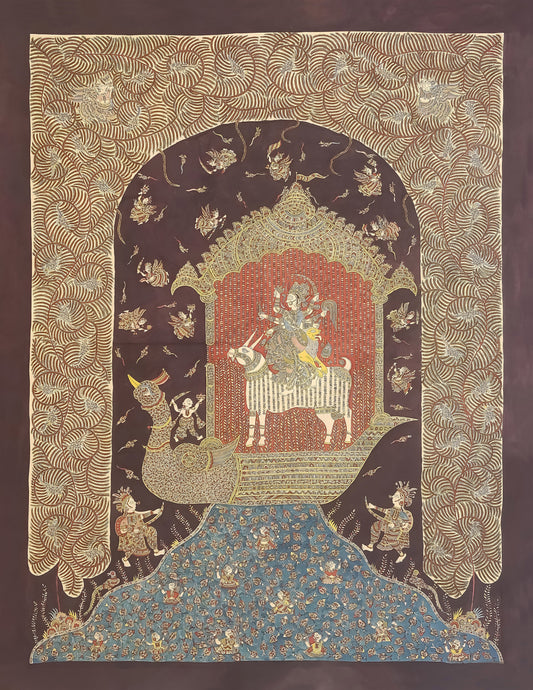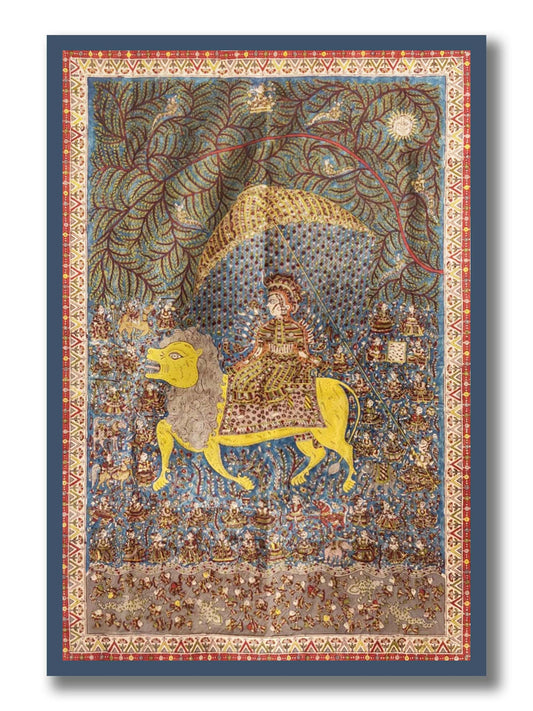Sanjay Manubhai
Far from gilded thrones of temples that excluded the marginalized, a young Sanjay Manubhai Chitara started building portable Devi shrines in the form of textiles under the tutelage of his father Manubhai Chitara. They come from Vaghari tribes who were historically prohibited by upper caste communities from entering Goddess Temples. Born in 1978, Sanjay Chitara is part of one of the last surviving families that created the Mata ni Pachedi cloth paintings. They are also called Mata no Chandarvo. They trace their association with the art of painting ritual cloth back three centuries. At present, Sanjay Chitara has moved away from the traditional palette of maroon and black made from oxidized iron and palm sugar and experiments with turmeric, henna, and indigo to create a more varied color scheme while still using the age-old methods of extracting color from natural materials. His works are thus portable shrines that adorn houses of private collectors and organizations.
Sanjay Chitara has participated in several group exhibitions in India and around the world such as Absolute Tuesdays: Living Traditions, Saffron Art (2023); Spic Macay; Vernacular, In the Contemporary Part One: Working, curated by Jackfruit Research and Design led by Annapurna Garimella, Devi Arts Foundation, Bangalore (2011); and the Hat Project, UK. His works were exhibited in solo shows like The Painted Goddess: Contemporary Shrine Cloths, curated by Radhi Parekh, Artisans’, Mumbai (2016). He won the Gujarat State Award in 1999 and a National Award in 2000. His studio is based in Ahmedabad.










.png?v=180585433461421961291732270581)






















